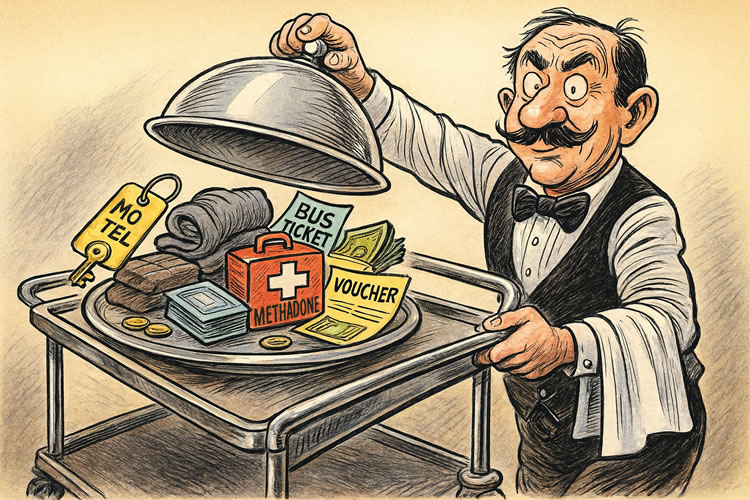A Crisis Decades in the Making
Vermont’s criminal-justice backlog didn’t appear overnight. The state had roughly 10,000 pending criminal cases in 2019. After COVID court closures, that figure shot to about 21,000 and has refused to come back down. Judiciary data show nearly 60 % of all pending cases belong to only 3,400 repeat defendants.
Governor Phil Scott’s new “Community Accountability Court” for Chittenden County is a triage move, not reform. It aims to process the chronic repeaters who now consume most of the system’s bandwidth.
The Mechanics of the Logjam
Vermont’s 72 state’s attorneys handle the same workload they did a decade ago—except that workload has doubled. Each attorney carries roughly 340 – 360 open cases, and each victim advocate juggles more than 600.
The Docket Pressures report shows how the math fails:
- 2023 saw 5,023 Failure-to-Appear warrants, each one a case reboot.
- Nearly 700 defendants have five or more open dockets apiece.
- Chittenden County alone holds 12 – 13 % of the entire state’s backlog.
Every missed hearing and re-arrest adds more paperwork and more victims. The courts are running laps around the same few hundred offenders.

How Policy Helped Build the Pile
The roots stretch back to the mid-2010s. As the opioid crisis deepened, low-level property and possession arrests surged. Staffing didn’t. Then came a series of “humane” reforms: risk-based bail, broad release-on-recognizance, and diversion first. The intent was compassion; the effect was chaos.
Supervision capacity never matched policy ambition. People skipped court, new charges were filed, and each failure recycled through the same system. By 2019, Vermont was already behind. COVID simply froze the calendar and exposed how little slack existed.
The Missed Chance of a Generation
When Congress passed the American Rescue Plan Act (ARPA) in 2021, Vermont received nearly $1 billion in flexible aid. The Treasury rulebook explicitly allowed those funds to support “public safety, court operations, hiring, and backlog reduction.”
Instead, the state used the windfall to underwrite its Global Warming Solutions Act agenda—weatherization grants, EV rebates, and “resilience” consultants. None of that spending was required by law; it was a political choice. (VT ARPA 2022 & ARPA VT 2023)
Had just $50 – 100 million—5 to 10 percent of the ARPA pot—been directed to the judiciary and prosecutors, Vermont could have:
- Added 25 prosecutors and 20 public defenders, cutting caseloads by a third.
- Funded six additional judgeships and courtroom staff.
- Built statewide electronic filing and remote-hearing systems.
- Expanded pre-trial supervision to curb repeat failures-to-appear.
That spending would have been completely compliant with federal guidance and could have erased much of the COVID-era backlog by 2023. Instead, Vermont chose symbolism over function.

🍁 Make a One-Time Contribution — Stand Up for Accountability in Vermont 🍁
The Opportunity Cost Nobody Mentions
The same period saw $400 – 500 million in climate-related outlays—money that raised electricity riders, fuel costs, and construction expenses while providing no measurable impact on global temperature. Vermont’s share of world CO₂ is about 0.01 %; even total decarbonization would not alter the global climate record.
Meanwhile, prosecutors worked without relief, courthouses aged, and victims waited years for closure. The human cost—lost trust, repeated offenses, and fear—never appears in budget line items, but Vermonters feel it daily.
What a Rational Reallocation Could Have Done
| Reinvestment Item | Cost Estimate | Tangible Outcome |
|---|---|---|
| +25 prosecutors / +20 defenders | $18 M / yr | Caseloads cut ≈ 30 % statewide |
| +6 judges + clerks + courtroom tech | $10 M | Extra regional docket capacity |
| Pre-trial supervision + treatment slots | $12 M | Reduced FTAs & recidivism |
| Case-management IT modernization | $8 M | Clearance rate ↑ 10–15 % |
A sustained $50 million annual investment could have halved Vermont’s backlog by now and restored a normal pace of justice.
The Real Cost of Symbolic Politics
The “green” programs won headlines. The justice system got none—and broke. Victims of repeat offenders became collateral damage while officials congratulated themselves on climate leadership.
Now, faced with the predictable collapse, the same leaders are scrambling for emergency fixes: special courts, “surge” prosecutors, and temporary judges. It’s a Band-Aid on a wound that should never have existed.
The Bottom Line
Vermont didn’t lack money; it lacked priorities. Between ARPA flexibility and record budgets, the state could easily have modernized its courts and restored deterrence. Instead, it spent its windfall chasing climate prestige that can’t be measured and justice outcomes that can’t be defended.
If Vermont had invested first in the quality of life and public safety of Vermonters, the state’s courts would be functional, its communities safer, and its citizens less cynical. Instead, we’re left with two graphs that tell the story: one showing a decade-long backlog that never came back down, and another proving that a few hundred repeat offenders still drive most of it.
That’s not a crisis of resources—it’s a crisis of judgment.
Dave Soulia | FYIVT
You can find FYIVT on YouTube | X(Twitter) | Facebook | Instagram
#fyivt #Vermont #ARPA #JusticeReform
Support Us for as Little as $5 – Get In The Fight!!
Make a Big Impact with $25/month—Become a Premium Supporter!
Join the Top Tier of Supporters with $50/month—Become a SUPER Supporter









Leave a Reply